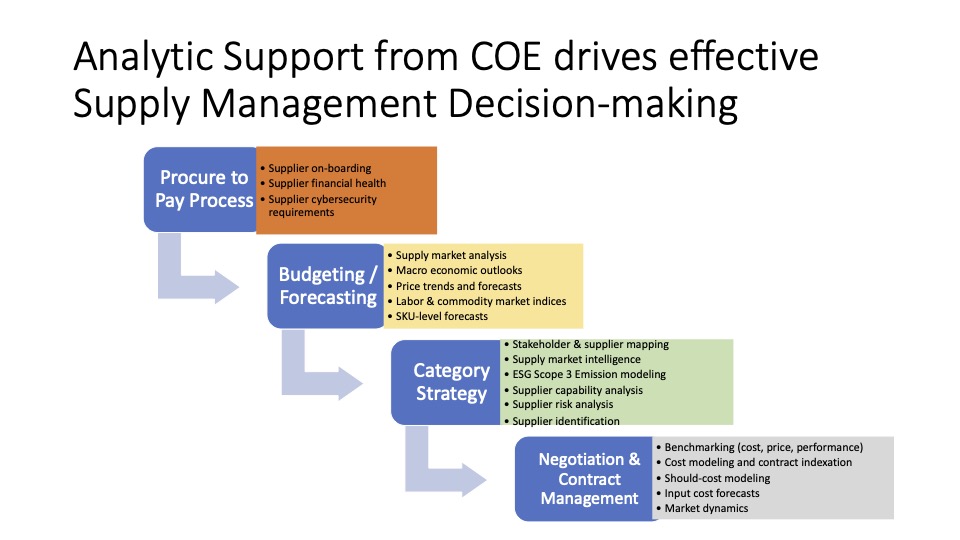The Role of Organizational Design
More organizations are seeking new approaches to compete through a competitive supply chain strategy. Many of these strategies involve the following elements:
- Development of a centrally led supply chain organization that is not fragmented and aligned with corporate strategic initiatives, with the authority to collaboratively lead the behavioral and cultural changes required across business units.
- Conscious development and modification of supply chain structures to meet business requirements
- Leveraging of corporate spend
- Building of cross-functional teams that reach across organizational boundaries to manage the supply chains to achieve strategic goals and provide exceptional value to stakeholders.
- Integration of key suppliers into cross functional teams to leverage suppliers skills, knowledge and capabilities for each organizations mutual benefit
- A disciplined focus on logistics excellence through the use of standard processes, practices, technology and sharing of information to ensure supply chains are effective, efficient and continuously striving for the next step in performance improvement
- Being a Customer of Choice through rapid payment, equitable and ethical treatment of our suppliers
Execution of these strategies is contingent on a supporting organizational structure. Recent research validates the fact that supply chain improvements are achieved when organizations recognize the importance of SCM at a senior level. Specifically, successful organizations are characterized by:
- A Senior executive responsible for SCM who reports to the CEO
- A corporate committee that is actively involved in providing direction to the implementation of SCM strategies
- Coordination of strategic initiatives accomplished centrally with the active involvement of business units
- Ownership for operational aspects of SCM remaining with operational business units
- The focus of SCM operational aspects moving from transaction execution to coordination and synchronization
- Common services centralized for improved efficiency and control over strategic initiatives and coordinated process planning across all business units.
Recent research suggests that leading organizations are adopting organizational structures with the following characteristics:
- A Senior executive responsible for SCM who reports to the CEO
- A corporate committee that is actively involved in providing direction to the implementation of SCM strategies
- Coordination of strategic initiatives accomplished centrally with the active involvement of business units
- Ownership for operational aspects of SCM remaining with operational business units
- The focus of SCM operational aspects moving from transaction execution to coordination and synchronization
- Common services centralized for improved efficiency and control over strategic initiatives and coordinated process planning across all business units.
To drive value into the organization, the supply chain management organization must report to the CEO. Supply chain transactions will become largely automated (80% of transactions) to allow Supply Chain Associates to focus their energy on value-added supply chain strategies and processes.
This organizational model is best described by Peter Drucker’s management concept of “federal decentralization”:
Any organization requires both strong parts and a strong center. The term “Decentralization is actually misleading—though far too common by now to be discarded. Federal decentralization requires strong guidance from the center through the setting of clear, meaningful and high objectives for the whole. The objectives must demand both a high degree of business performance and a high standard of conduct throughout the enterprise” (1).
Organizational capabilities and effectiveness are significantly impacted by horizontal or collaborative practices such as cross functional teams, information sharing, and participation / involvement in decision making by customers and suppliers (including internal to the company but outside of the organization)(2). These practices increase horizontal expertise and effectiveness.
It will require significant changes to deploy this organizational model. Most company supply chain structures are fragmented and not aligned with senior management initiatives. However, structure must follow strategy, and not the other way around.
References:
(1) Drucker, Peter, The Practice of Management, 1956, p. 214.
(2) Galbraith, Jay R. (1993). Competing with Flexible Lateral Organizations. 2nd Ed. Addison-Wesley. Reading MA. Pg. 1-11.
- Categories:


